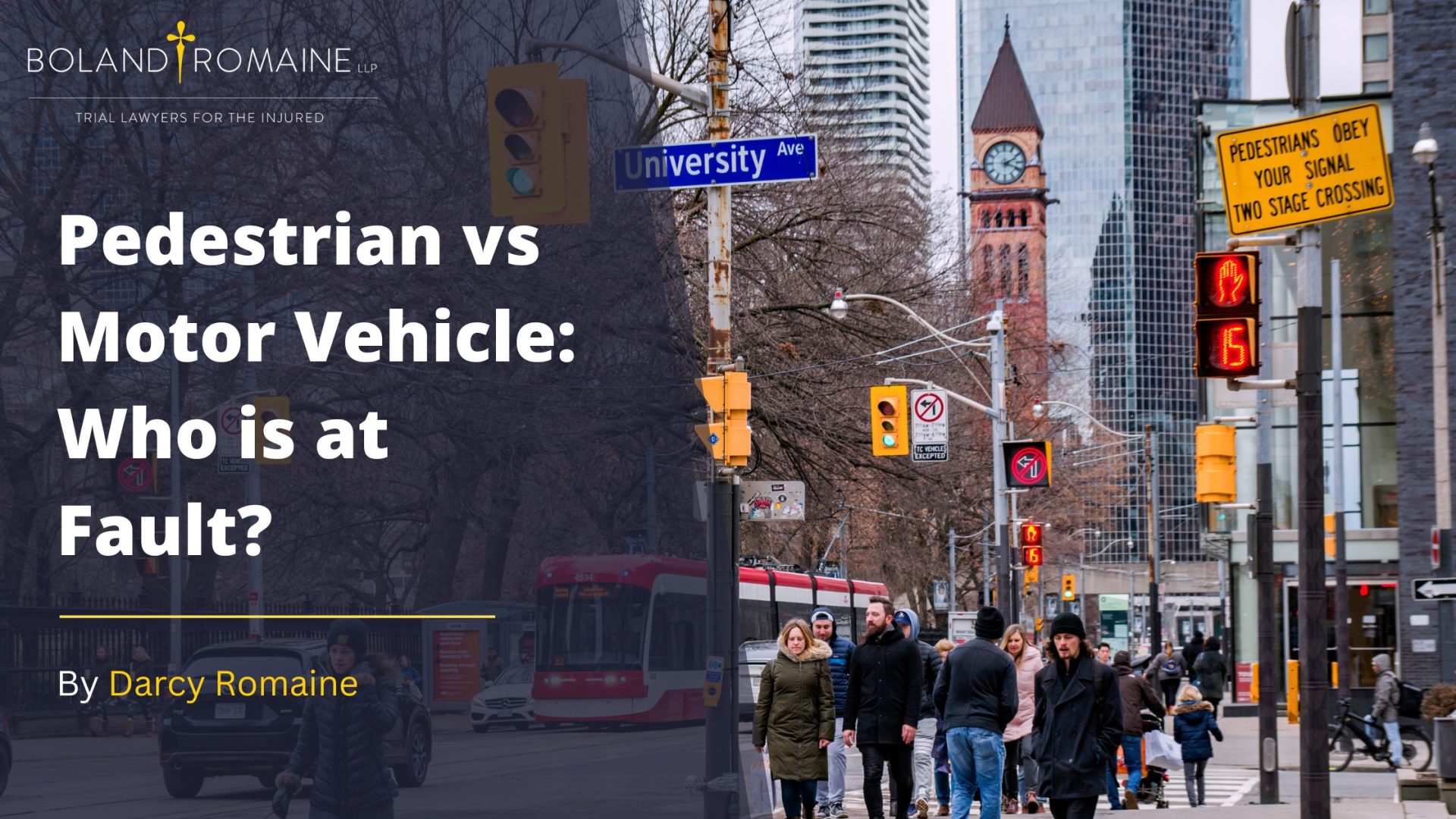Pedestrian vs Motor Vehicle: Who is at Fault?
- 01.11.2024
- Insights

When motor vehicles and pedestrians share the same space, there is an inherent risk. Section 144 of the Highway Traffic Act outlines the responsibilities of both drivers and pedestrians to help make these shared spaces safer.
It’s widely understood that both pedestrians and drivers must follow specific rules to prevent accidents and injuries. For pedestrians, this means adhering to crossing signals, using designated crosswalks, and staying on sidewalks, as we’re taught from a young age to avoid hazardous situations. Drivers are similarly obligated to follow traffic signals and yield to pedestrians.
For instance, when making a left or right turn at an intersection, drivers must yield to pedestrians who are legally crossing. In any situation where pedestrians and vehicles legally share space, vehicles are required to yield the right of way to pedestrians.
But what Should you do if You're a Pedestrian Struck by a Motor Vehicle?
In any accident involving injury, seeking immediate medical care is crucial, as early intervention is key to recovery. If you suffer serious injuries, consulting an experienced personal injury lawyer can help you understand your rights and options.
Ontario, like most Canadian provinces, operates under a “no-fault” insurance system. This means that your own auto insurer is responsible for covering treatment deemed reasonable and necessary within set monetary limits, regardless of who was at fault in the accident. This coverage, known as Accident Benefits, is available to all insured individuals.
What if an injured pedestrian doesn’t have auto insurance? In this case, they can make an Accident Benefits claim through the insurance policy of the vehicle involved in the accident. If the driver is uninsured or unidentified, the injured pedestrian may apply for benefits through the Motor Vehicle Accident Claims Fund, ensuring that coverage is accessible.
Filling a Lawsuit Against the Driver
Additionally, an injured pedestrian may have the right to file a lawsuit against the driver or owner of the vehicle. Success in such a claim requires demonstrating negligence on the driver’s part and that the injuries meet a minimum threshold.
Unlike accidents between two drivers, incidents involving a pedestrian and a vehicle generally presume driver fault, placing the burden on the driver to prove that the accident was unavoidable due to the pedestrian’s actions.
Determining liability in pedestrian-vehicle accidents can be complex. Even if a pedestrian didn’t strictly follow road rules, they may still have a valid claim. Cases where pedestrians crossed against the light or jaywalked have, at times, resulted in favorable outcomes for the injured pedestrian.
Our pedestrian accident lawyers will guide you through the process, ensuring your rights are protected and that you receive the full compensation you deserve.
- Navigating Insurance Claims: After an accident, insurance companies can be tough to deal with. They often aim to minimize the payout to save their resources. A skilled lawyer understands how to navigate these complexities and can help ensure you receive the accident benefits you deserve.
- Determining Liability: It can be challenging to determine who’s at fault in many types of accidents, be it motorcycle accidents, bicycle accidents, E-bike accidents, or E-scooter accidents. A lawyer can help identify the negligent parties and gather necessary evidence from the accident scene.
- Understanding Legal Procedures: The realm of pedestrian accident law is intricate. Having an expert on your side ensures that you take the right legal action, adhering to all legal protocols and deadlines.
- Securing Compensation: Beyond medical expenses, accident victims may need compensation for loss of income, future care, and pain and suffering. An experienced pedestrian accident lawyer will ensure you’re adequately compensated for all damages, often recovering millions of dollars for their clients.
**Please note that the contents of this blog should not be relied upon as legal advice or medical advice, but only for information and reference purposes. You should always follow the advice of your doctors and treatment providers with respect to your diagnoses and what health and medical steps you should take to best recover. If you wish to obtain legal advice, please contact our office and arrange for a free consultation with one of our lawyers.**




